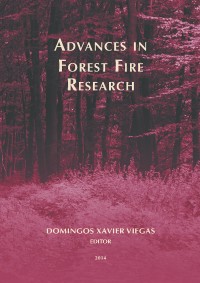Please use this identifier to cite or link to this item:
https://hdl.handle.net/10316.2/34232| DC Field | Value | Language |
|---|---|---|
| dc.contributor.author | Saraiva, Ernandes A. | |
| dc.contributor.author | Soares, Ronaldo Viana | |
| dc.contributor.author | Batista, Antônio Carlos | |
| dc.contributor.author | Tertuliano, Horácio | |
| dc.contributor.author | Gomes, Ana Maria | |
| dc.date.accessioned | 2014-10-22T16:32:45Z | |
| dc.date.accessioned | 2020-09-09T21:31:04Z | - |
| dc.date.available | 2014-10-22T16:32:45Z | |
| dc.date.available | 2020-09-09T21:31:04Z | - |
| dc.date.issued | 2014 | - |
| dc.identifier.isbn | 978-989-26-0884-6 (PDF) | |
| dc.identifier.uri | https://hdl.handle.net/10316.2/34232 | - |
| dc.description.abstract | The efficiency on forest fire control is directly related to the quickness on detection and localization, which significantly can minimize the potential of damages. The current technology used in the manufacture of weather radars has opened new opportunities for research, making it possible to detect small signals, not necessarily used in the daily rain observations. The objective of this research is to use the capacity of weather radar, configured to execute tasks of high sensitivity, to monitor and detect “non meteorological targets”, i.e., the smoke produced by sugar cane burnings and, by similarity, forest fires. An experimental model was developed and applied to the S-band weather radar operated by the Meteorological Research Institute – IPMet/UNESP, located in the central region of the State of São Paulo, Brazil. In the first experiment, all the monitored sugar cane burnings were efficiently detected by the radar with a delay of 2 to 9 minutes, with an average of 4.67 minutes, a significant reduction in the response time of 15 minutes, considered optimal for conventional detection systems. In the second experiment, the weather radar monitored forest area when the fire danger rating index was medium or high and the same events observed by the observation towers were detected by the weather radar. The methodology used in this study can add significant value to the information in the forest fire suppression decision-making. The results showed the efficiency of weather radar to detect smoke. Therefore, weather radars systems could be used, in the absence of rain echoes, for monitoring agriculture burnings and detecting forest fires. | eng |
| dc.language.iso | eng | - |
| dc.publisher | Imprensa da Universidade de Coimbra | por |
| dc.relation.ispartof | http://hdl.handle.net/10316.2/34013 | por |
| dc.rights | open access | - |
| dc.subject | Fire detection | eng |
| dc.subject | Weather radar | eng |
| dc.subject | Forest fire | eng |
| dc.title | Monitoring forest fires and burnings with weather radar | por |
| dc.type | bookPart | por |
| uc.publication.firstPage | 1436 | - |
| uc.publication.lastPage | 1443 | - |
| uc.publication.location | Coimbra | por |
| dc.identifier.doi | 10.14195/978-989-26-0884-6_158 | - |
| uc.publication.section | Chapter 5 - Fire Suppression and Safety | por |
| uc.publication.digCollection | PB | por |
| uc.publication.orderno | 158 | - |
| uc.publication.area | Ciências da Engenharia e Tecnologias | por |
| uc.publication.bookTitle | Advances in forest fire research | - |
| uc.publication.manifest | https://dl.uc.pt/json/iiif/10316.2/34232/211239/manifest?manifest=/json/iiif/10316.2/34232/211239/manifest | - |
| uc.publication.thumbnail | https://dl.uc.pt/retrieve/11171581 | - |
| uc.publication.parentItemId | 53868 | - |
| uc.itemId | 70249 | - |
| item.grantfulltext | open | - |
| item.fulltext | With Fulltext | - |
| Appears in Collections: | Advances in forest fire research | |
Files in This Item:
| File | Description | Size | Format | |
|---|---|---|---|---|
| 978-989-26-0884-6_158.pdf | 1.79 MB | Adobe PDF |  |
Items in DSpace are protected by copyright, with all rights reserved, unless otherwise indicated.
